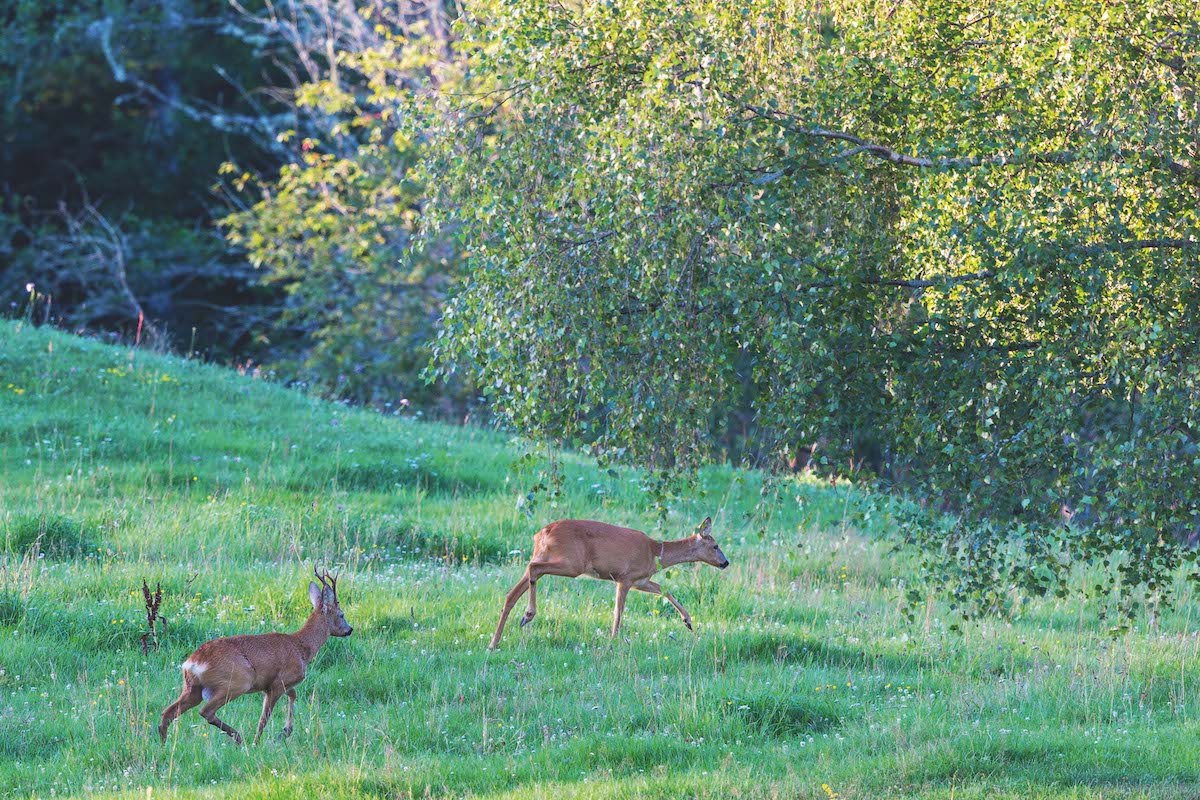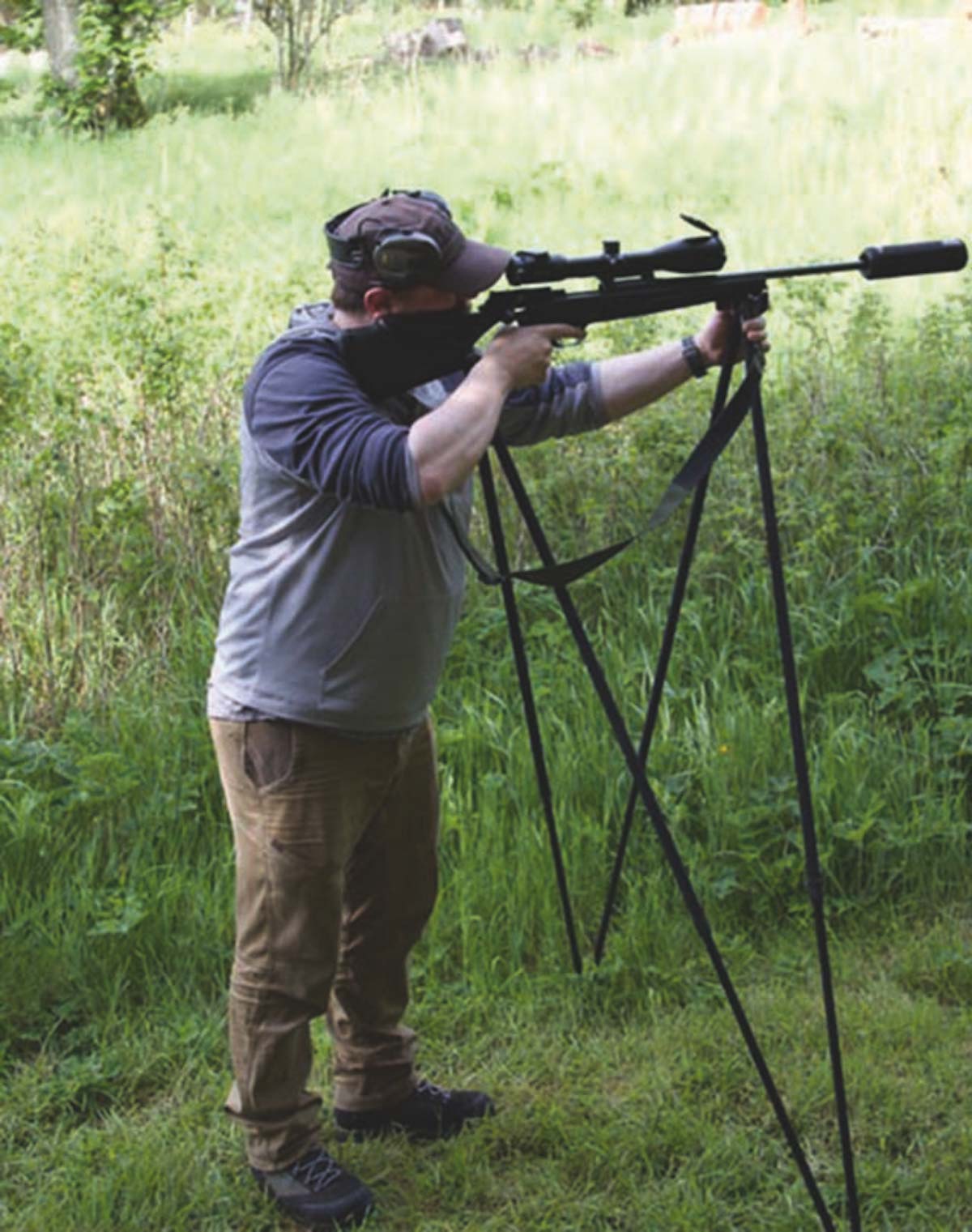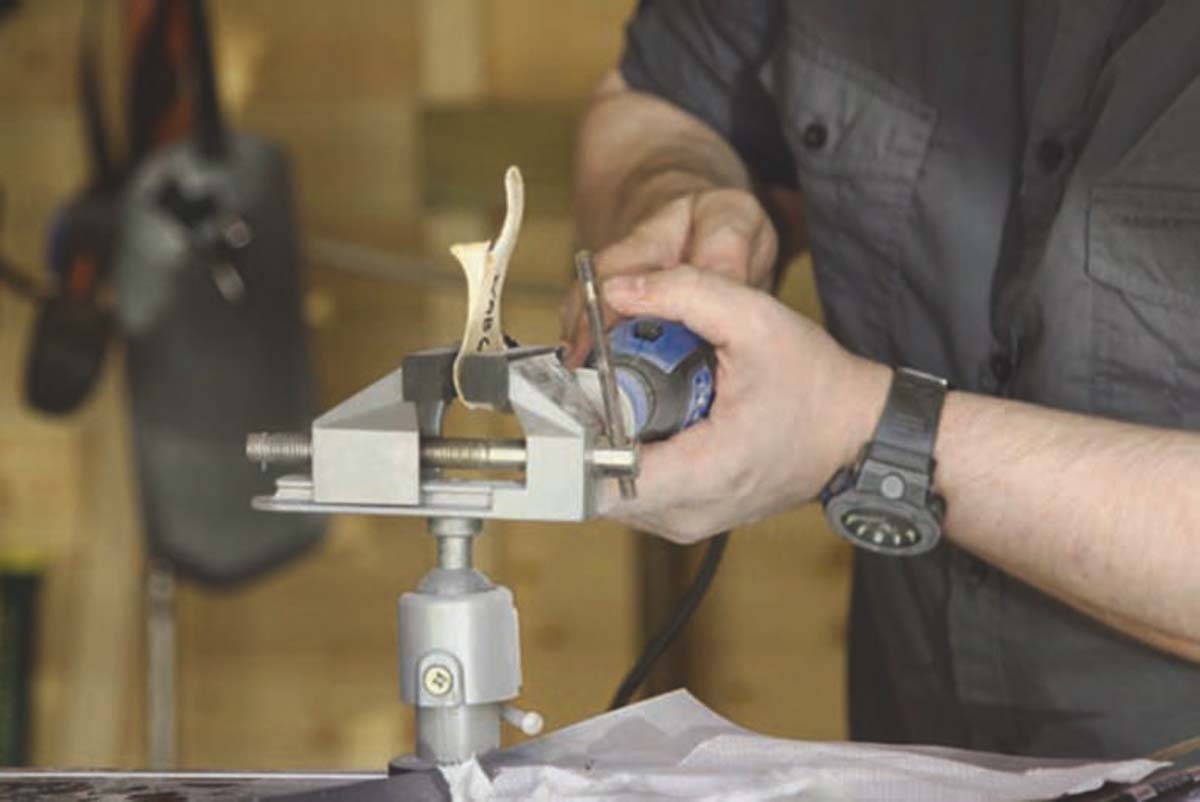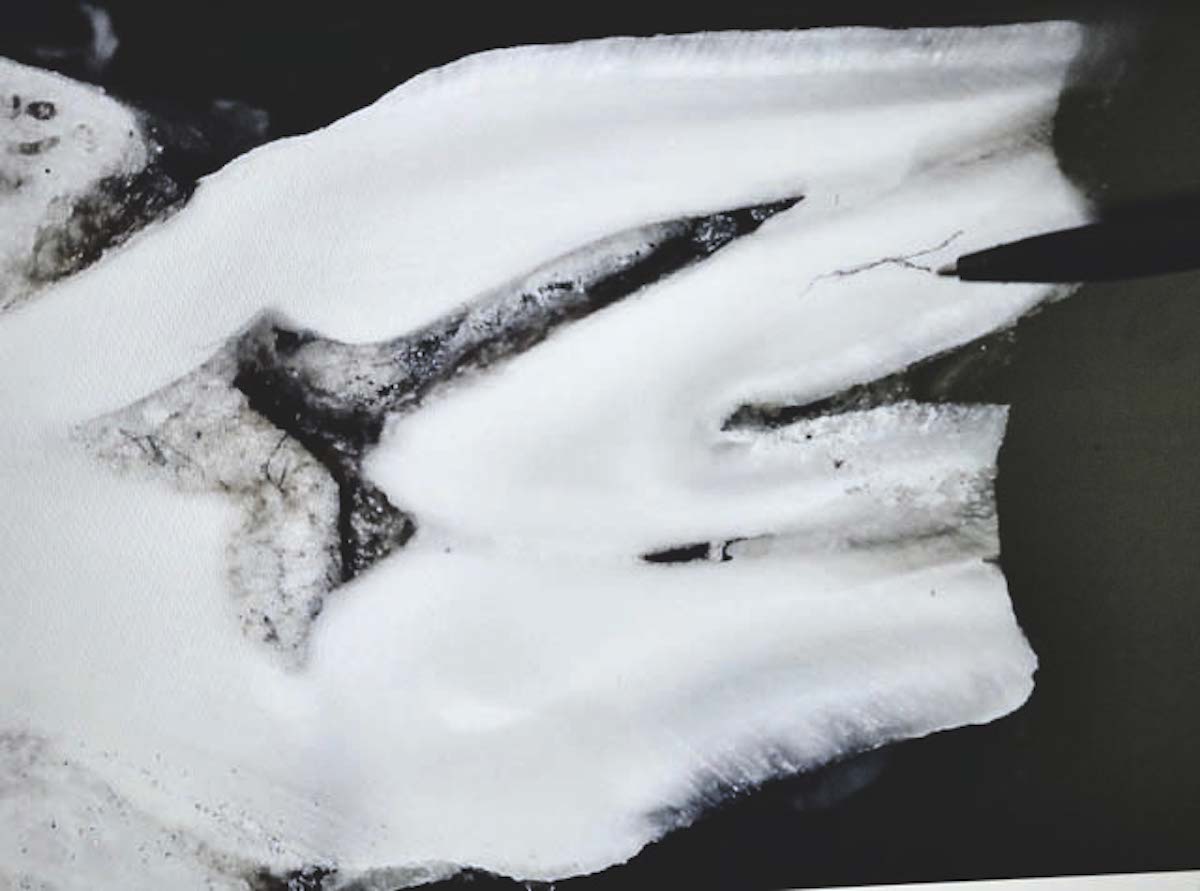Win CENS ProFlex DX5 earplugs worth £1,149 – enter here
Telling the age of deer: here’s how to judge
 Two Deers in rut chasing each other in the field
Two Deers in rut chasing each other in the field
The glorious roe rut is alive. Proceedings start around mid-July and rise to the peak later in the month and into the first weeks of August. That said, rutting behaviour may be seen earlier and although it is seen on one estate, it doesn’t follow that it is happening to the same intensity elsewhere. The action can vary even on estates that are not far apart. Catching it is all about being on the ground and keeping one’s eyes open for the signs. I have witnessed rutting activity at the end of June (very early) and as late as 29 August (not that unusual). (Read what do the different barks of roe deer mean?)
One thing is for certain: when a single doe comes into season (oestrus) it will start to heat up and the woods and fields come alive with activity. If you don’t see much of the cavorting, be sure it is definitely going on somewhere. Inclement weather can persuade us that there is nothing happening in our woods, but it is, come rain or shine. It is the timing we need to get right.

A trip out at this time of year is never wasted
I have mentioned previously the records that should be held for deer management plans. One of the records we hold is the ageing of jaws. An estimation of wild deer age can be done by observing the amount of wear externally on the teeth. This is always an estimate, and the judgement using this method almost boils down to classifying the deer as young, middle-aged or old. To estimate the age by wear, it would need years of jaws collected from the same estate so that the erosion of the teeth could be monitored.
Age of deer
Wear on teeth can be caused by the type of soil and food source. For example, sandy soil is likely to wear the teeth down more rapidly than a softer loam. Certainly, the roe deer we have that are mainly on commercial pine seem to wear much faster than the deer we have on lower agricultural ground. The red deer on the west coast of Scotland that come down to the shore to eat seaweed are another example of this; seaweed carries sand and that will grind the teeth down more rapidly.

A deer’s age can be estimated by the amount of wear on the teeth
Deer are ruminants, like cattle or sheep, and have to eat large amounts of browse (leaves and buds) or grasses, which they chew, swallow and then regurgitate to chew even more. They do this until the fodder is broken down enough to go through their digestive system and extract the most nutrition. This is called ‘chewing the cud’. If a deer’s teeth wear down, they cannot extract the nutrition they need and eventually starve.
Deer that are on hard ground do not have long lives, and that is in part due to their teeth. The nutrition available from pine forests is not what any of us might call a luxury diet, and it is one of the factors that takes its toll on the deer population. Roe deer living on upland commercial pine forests may have a lifespan of up to six years, whereas their lowland neighbours may well reach the grand old age of 10. I have a head from lowland deciduous woodland that is 11; however, 10 years is usually about the maximum. (Read where can I find deer antlers?)

Digital microscopes allow you to take pictures for your records
So, how to age teeth accurately? Due to the COVID-19 pandemic, we had a large collection of jaws that had accumulated. The Greenlee Deer Management Group spent three days, over the Queen’s Platinum Jubilee weekend no less, ageing our collection of jaws and completing their annual shooting skills test. Now that is dedication for you.
Why bother with the jaws, I hear some of you ask. I have to say that by the end of it all, one or two of us were asking the same question. Anyway, going back to the records that are kept for the management plans, from which any cull plan is derived, accurate ageing is, or should be, part of the information that is included. This ensures that the cull results in a balanced population. I have been on estates where only the mature buck heads have been taken for some years, creating an imbalance that resulted in the bloodline of good representative roe deer being lost. It took more than five years to bring about an improvement in the population. This highlights how important it is to know what you are intending to cull. (Read our list of popular rifles for deer stalking.)
Method
So how is the ageing classification done? First, you will need a fine cutting tool, a digital microscope and fine wet/dry sandpaper. The good thing about digital microscopes, by the way, is that pictures can be taken for your records. How many of us deer managers have taken a six-point buck with what we thought was a good mature head only to be disappointed.
The photo records of the teeth are a great learning tool to accurately match age with the head. Don’t be surprised if that buck is only five. I have said before that many bucks are taken far too young, way before their maturity, purely because of those six points. What a waste.
To begin, cut down through the tooth, just one side of the cusp, right through the tooth and jaw. Then, all in one, cut out another fine slice of tooth with the jaw. Polish on the fine sandpaper – little and often is best, as it is easy to sand away the cement layers you will need to age it. Then put it under the microscope and count the cement layers.
Easy? Not really. It does take some practice, but you will soon learn and there are more teeth in the jaw to go from if you do. The third molar is the best one as it is the largest. You should now be able to make an accurate assessment of the age of that deer. Even a percentage of jaws from your cull will give you an idea of what you are taking, but the more the merrier.
All this will give you a more accurate picture of what you are looking for when you are out in the field. But a word about safety here: gloves and a good mask must be worn as the bone dust is invasive.
Related Articles
Get the latest news delivered direct to your door
Subscribe to Shooting Times & Country
Discover the ultimate companion for field sports enthusiasts with Shooting Times & Country Magazine, the UK’s leading weekly publication that has been at the forefront of shooting culture since 1882. Subscribers gain access to expert tips, comprehensive gear reviews, seasonal advice and a vibrant community of like-minded shooters.
Save on shop price when you subscribe with weekly issues featuring in-depth articles on gundog training, exclusive member offers and access to the digital back issue library. A Shooting Times & Country subscription is more than a magazine, don’t just read about the countryside; immerse yourself in its most authoritative and engaging publication.







